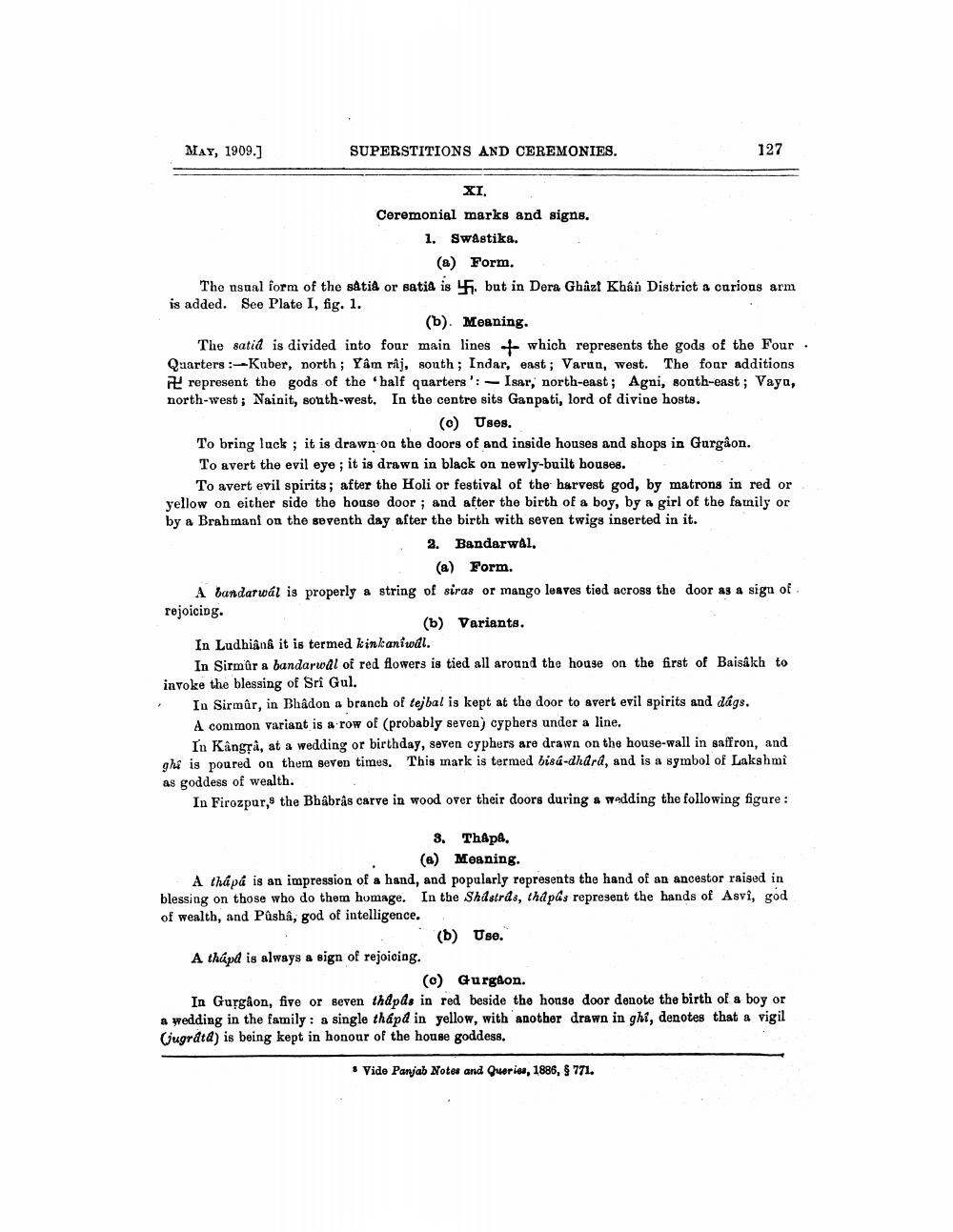________________
MAY, 1909.]
SUPERSTITIONS AND CEREMONIES.
127
XI. Ceremonial marks and signs.
1. Swastika.
(a) Form. The usual form of the stia or satia is 47. but in Dera Ghazt Khân District a carious arm is added. See Plate I, fig. 1.
(b). Meaning. The satid is divided into four main lines to which represents the gods of the Four. Quarters :- Kuber, north ; Yâm râj, south ; Indar, east; Varun, west. The foar additions PŁ represent the gods of the half quarters':- Isar, north-east; Agni, south-east; Vaya, north-west ; Nainit, south-west. In the centre sits Ganpati, lord of divine hosts.
(0) Uses. To bring lack ; it is drawn on the doors of and inside houses and shops in Gurgaon. To avert the evil eye ; it is drawn in black on newly-built houses.
To avert evil spirits; after the Holi or festival of the harvest god, by matrons in red or yellow on either side the house door; and after the birth of a boy, by a girl of the family or by a Brahmani on the seventh day after the birth with seven twigs inserted in it.
2. Bandarwal,
(a) Form. A bandarwal is properly a string of siras or mango leaves tied across the door as a sign of rejoicing.
(b) Variants. In Ludhiang it is termed kinkaniwil.
In Sirmar a bandarwal of red flowers is tied all around the house on the first of Baisakh to invoke the blessing of Sri Gul.
Io Sirmûr, in Bhadon a branch of tejbal is kept at the door to avert evil spirits and dágs. A common variant is a row of (probably seven) cyphers under a line.
In Kangra, at a wedding or birthday, seven cyphers are drawn on the house-wall in saffron, and ghi is poured on them seven times. This mark is termed bisá-dhard, and is a symbol of Lakshmi as goddess of wealth.
In Firozpur, the Bhabras carve in wood over their doors during a wedding the following figure:
3. Th&pa.
(a) Meaning A thápá is an impression of a hand, and popularly represents the hand of an ancestor raised in blessing on those who do them homage. In the Shastrds, th&pas represent the hands of Asvi, god of wealth, and Pushâ, god of intelligence.
(b) Use. A thápd is always a sign of rejoicing.
(c) Gurgaon. In Gurgaon, five or seven thdpds in red beside the honge door denote the birth of a boy or a wedding in the family: a single thápd in yellow, with another drawn in ghi, denotes that a vigil (jugrata) is being kept in honour of the house goddess.
# Vide Panjab Notes and Queries, 1886, & 771.




